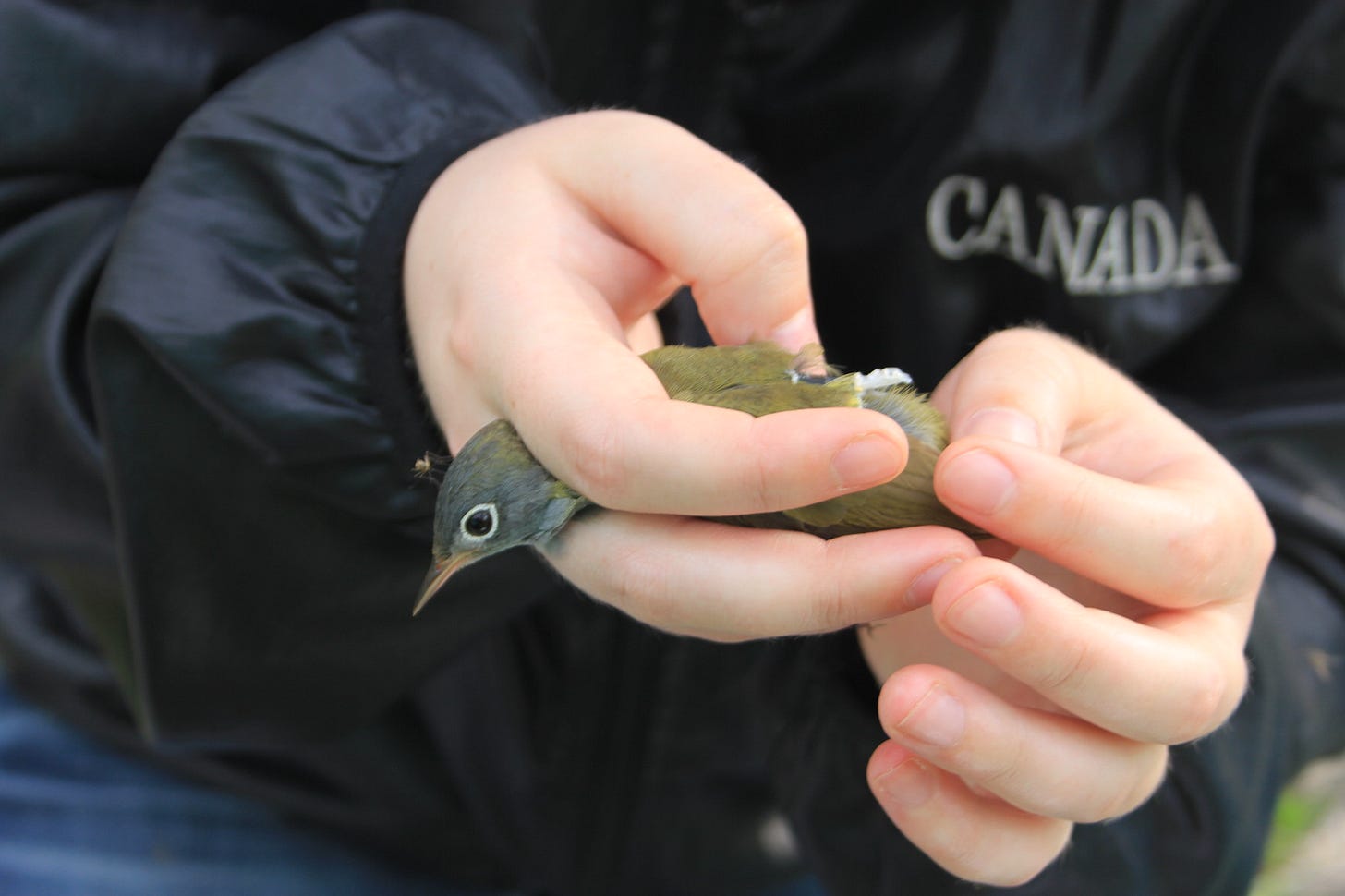Skulky, scarce and secretive, Connecticut Warblers are famously elusive
Research on Canadian breeding grounds provides insight into a little-understood bird
Please enjoy this post while I take a week off. This post first appeared on May 17, 2021.
Connecticut Warblers are famously elusive and secretive birds. Even at Chicago’s Montrose Point, where hundreds of warblers are found on May weekends, there might just be two reports of Connecticut Warbler.
“In general, they are very hard to find,” says Emily McKinnon of the University of Manitoba. “They seem to always be in really dense habitat. They are one of those birds that is really not obvious in migration.”
But Connecticut Warblers move through Chicagoland in some numbers, and a handful nest as close as northern Wisconsin and the Upper Peninsula of Michigan. McKinnon has unique insight having studied Connecticuts on their breeding grounds in the boreal forest outside Winnipeg. And Connecticuts, like other warbler species, are very little-studied.
“I think the surprising thing at their breeding sites is that they are so obvious,” McKinnon says. “They’re very different personalities on their breeding sites.”
Connecticut Warblers, though, have declined in numbers like so many migratory songbirds. A paper released in 2021 states that the birds have declined by 62% on the breeding grounds since 1966.
McKinnon and her colleagues have attached light-sensitive geolocators to the warblers to understand their migratory routes. That scarceness in spring migration that we experience in Chicago is part of the story. Some Connecticut Warblers in fall migrate east and south over the Atlantic Ocean to get to their wintering grounds in South America’s Gran Chaco region. Others migrate through the interior of North America.
The 2021 paper found that habitat loss and fragmentation on the breeding grounds “are strongly correlated with population declines.” Among the challenges facing Connecticuts are conversion of forest to agriculture and peat mining. Not to mention the typical suite of challenges such as building collisions that face so many of our birds.
“Connecticuts do have to go through this gauntlet of the Great Lakes area,” McKinnon says. “They funnel through Chicago, Detroit and Toronto…a window strike is a bigger negative impact because there’s less of them.”
And while elusive, those few sightings in Chicago do make a difference, as do local habitat restoration efforts.
“They’re not a very abundant species to begin with,” McKinnon says, “so conserving stopover habitat would be disproportionately important.”
Like Connecticut Warblers, Prothonotary Warblers are another migrant songbird that needs some help.
I shared with paid subscribers the uncanny experience I had with Prothonotary Warblers in Central Illinois a few years ago. Here’s a 2-minute look at an effort to install nest boxes for these golden swamp warblers.
This Week in Birding provides original posts direct to your inbox each Monday and occasional Fridays. Click below to become a paid subscriber today, and join a community where telling stories of birds and making films like “Monty and Rose” and “The Magic Stump” and “Fluddles” is possible.



